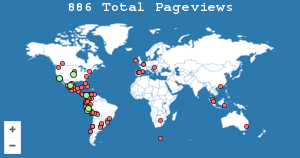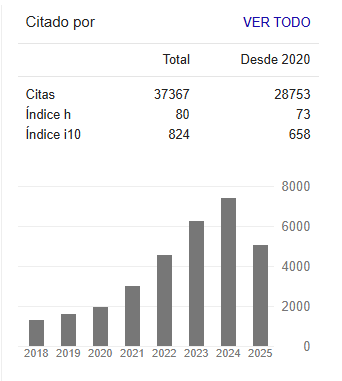Estrategias de descuento en el precio y de bonus pack en la intención de compra
Resumen
Las promociones de marketing son prácticas ampliamente recurridas en el mercado. No obstante, existe una disyuntiva en los hallazgos sobre la efectividad de la estrategia de descuento y de la de bonus pack. Por lo anterior, el objetivo de esta investigación es analizar de manera comparativa el efecto de ambas estrategias en la intención de compra. Para ello se empleó un diseño experimental con 69 personas utilizando como producto una barra de chocolate, aplicando un análisis de la varianza (ANOVA) de un factor. Los resultados señalan que el descuento de precio tiene un efecto mayor en la intención de compra. Estos resultados contribuyen a comprender en mayor medida el comportamiento del consumidor. Asimismo, se destaca que es importante elegir la promoción adecuada para promover el consumo en el corto plazo de productos semejantes al empleado en este estudio.
Citas
Ang, L., & Eisend, M. (2018). Single versus multiple measurement of attitudes: A meta-analysis of advertising studies validates the single-item measure approach. Journal of Advertising Research. https://doi.org/10.2501/JAR-2017-001
Bergkvist, L. (2015). Appropriate use of single-item measures is here to stay. Marketing Letters, 26(3), 245–255. https://doi.org/10.1007/s11002-014-9325-y
Calder, B., Phillips, L., y Tybout, A. (1981). Designing Research for Application. Journal of Consumer Research, 8(2), 197-207. https://econpapers.repec.org/article/oupjconrs/v_3a8_3ay_3a1981_3ai_3a2_3ap_3a197-207.htm
Carlson, J. P. (2018). Consumer evaluations of bonus packs offered with price discounts. Journal of Consumer Marketing, 35(1), 22–31. https://doi.org/10.1108/JCM-09-2015-1555
Chandran, S., & Morwitz, V. G. (2006). The Price of “Free”-dom: Consumer Sensitivity to Promotions with Negative Contextual Influences. Journal of Consumer Research, 33(3), 384–392. https://doi.org/10.1086/508439
Chen, H. A., Marmorstein, H., Tsiros, M., & Rao, A. R. (2012). When more is less: The impact of base value neglect on consumer preferences for bonus packs over price discounts. Journal of Marketing, 76(4), 64–77. https://doi.org/10.1509/jm.10.0443
Chen, H., & Rao, A. R. (2007). When two plus two is not equal to four: Errors in processing multiple percentage changes. Journal of Consumer Research, 34(3), 327–340. https://doi.org/10.1086/518531
Chinchay-Villarreyes, S. S., Cango Córdova, J. I., Aldana Tume, A. A., & Seminario Sanz, R. S. (2020). Estrategias de promoción para el fomento del turismo religioso en Perú/ Promotion strategies for the promotion of religious tourism in Peru. Revista de Ciencias Sociales, XXVI. https://doi.org/10.31876/rcs.v26i3.33247
Choi, H. S., & Chen, C. (2019). Archived version from NCDOCKS Institutional Repository The Effects Of Discount Pricing And Bundling On The Sales Of Game As A Service: An Empirical Investigation. The effects of discount pricing and bundling on the sales of game as a service: an empirical investigation. 21-Journal of Electronic Commerce Research, 20(1). https://bit.ly/3jrk9Q0
Diamond, W. D., & Sanyal, >Abhijit. (1990). The Effect of Framing on the Choice of Supermarket Coupons. ACR North American Advances, NA-17. https://www.acrwebsite.org/volumes/7055/volumes/v17/NA-17/full
El Financiero (2017). ¿Cuál es el chocolate ‘favorito’ de México? https://www.elfinanciero.com.mx/empresas/cual-es-el-chocolate-favorito-de-mexico
Estelami, H. (2003). The Effect of Price Presentation Tactics on Consumer Evaluation Effort of Multi-Dimensional Prices. Journal of Marketing Theory and Practice. https://doi.org/10.1080/10696679.2003.11501934
Exadaktylos, F., Espín, A. M., & Brañas-Garza, P. (2013). Experimental subjects are not different. Scientific Reports, 3(1), 1–6. https://doi.org/10.1038/srep01213
Farrag, D. A. (2017). Impact of Shari’ah on Consumers’ Behavior Toward Sales Promotion Tools: Focus on Egyptian Convenience Products. Journal of Food Products Marketing, 23(5), 533–552. https://doi.org/10.1080/10454446.2015.1048020
FEEBBO. (2018). Estudio de mercado sobre el consumo del chocolate | Feebbo Mexico. http://blog.feebbomexico.com/estudio-de-mercado-sobre-el-consumo-del-chocolate/
Guerreiro, R., Gouvêa, M. A., & Dos Santos, A. (2009). Strategic and economic issues regarding to bonus quantity policy. RAE Revista de Administracao de Empresas, 49(1), 49–61. https://doi.org/10.1590/S0034-75902009000100007
Gupta, S., & Cooper, L. G. (1992). The Discounting of Discounts and Promotion Thresholds. Journal of Consumer Research. https://doi.org/10.1086/209310
Hardesty, D. M., & Bearden, W. O. (2003). Consumer evaluations of different promotion types and price presentations: The moderating role of promotional benefit level. Journal of Retailing, 79(1), 17–25. https://doi.org/10.1016/S0022-4359(03)00004-6
Hawaldar, I. T., Ullal, M. S., Birau, F. R., & Spulbar, C. M. (2019). Trapping fake discounts as drivers of real revenues and their impact on consumer’s behavior in India: A case study. Sustainability (Switzerland), 11(17). https://doi.org/10.3390/su11174637
Hayduk, L. A., & Glaser, D. N. (2000). Jiving the Four-Step, Waltzing Around Factor Analysis, and Other Serious Fun. Structural Equation Modeling, 7(1), 1–35. https://doi.org/10.1207/S15328007SEM0701_01
Heath, T. B., Chatterjee, S., & France, K. R. (1995). Mental Accounting and Changes in Price: The Frame Dependence of Reference Dependence. Journal of Consumer Research, 22(1), 90. https://doi.org/10.1086/209437
Höst, M., Regnell, B., & Wohlin, C. (2000). Using students as subjects - a comparative study of students and professionals in lead-time impact assessment. Empirical Software Engineering. https://doi.org/10.1023/A:1026586415054
Huyghe, E., & Van Kerckhove, A. (2013). Can fat taxes and package size restrictions stimulate healthy food choices? International Journal of Research in Marketing, 30(4), 421–423. https://doi.org/10.1016/j.ijresmar.2013.07.002
Kantar World Panel. (2017). El chocolate: la golosina de todas las edades - Mexico - Kantar Worldpanel. https://www.kantarworldpanel.com/mx/Noticias-/El-chocolate-la-golosina-de-todas-las-edades
Kaur, A., Lewis, T., Lipkova, V., Fernando, S., Rayner, M., Harrington, R. A., Waterlander, W., & Scarborough, P. (2020). A systematic review, and meta-analysis, examining the prevalence of price promotions on foods and whether they are more likely to be found on less-healthy foods. Public Health Nutrition, 8, 1281–1296. https://doi.org/10.1017/S1368980019004129
Kim, H. M., & Kramer, T. (2006). “Pay 80%” versus “get 20% off”: The effect of novel discount presentation on consumers’ deal perceptions. Marketing Letters, 17(4), 311–321. https://doi.org/10.1007/s11002-006-9309-7
McCabe, S., & Branco Illodo, I. (2019). Thrilled to Have “Bagged a Bargain” or “Bitter” and “Very Frustrating”? Exploring Consumer Attitudes to Value and Deals in Tourism. Journal of Travel Research, 58(6), 945–960. https://doi.org/10.1177/0047287518790403
McColl, R., Macgilchrist, R., & Rafiq, S. (2020). Estimating cannibalizing effects of sales promotions: The impact of price cuts and store type. Journal of Retailing and Consumer Services, 53, 101982. https://doi.org/10.1016/j.jretconser.2019.101982
Mishra, A., & Mishra, H. (2011). The influence of price discount versus bonus pack on the preference for virtue and vice foods. Journal of Marketing Research, 48(1), 196–206. https://doi.org/10.1509/jmkr.48.1.196
Morwitz, V. G., Greenleaf, E. A., & Johnson, E. J. (1998). Divide and prosper: Consumers’ reactions to partitioned prices. Journal of Marketing Research, 35(4), 453–463. https://doi.org/10.2307/3152164
Park, S. (2016). Get Discount in Chocolate and Get More Toothpaste! The Effect of Product Preferences on Promotion About Price-Off and Value-Added According to Product Type: Focusing on Hedonic and Utilitarian Product (pp. 275–280). Springer, Cham. https://doi.org/10.1007/978-3-319-26647-3_54
Peng, L., Cui, G., & Chung, Y. (2020). Do the pieces fit? Assessing the configuration effects of promotion attributes. Journal of Business Research, 109, 337–349. https://doi.org/10.1016/j.jbusres.2019.11.081
Petit, O., Lunardo, R., & Rickard, B. (2020). Small is beautiful: The role of anticipated food waste in consumers’ avoidance of large packages. Journal of Business Research, 113, 326–336. https://doi.org/10.1016/j.jbusres.2019.10.003
Purnhagen, K. P., & van Herpen, E. (2017). Can Bonus Packs Mislead Consumers? A Demonstration of How Behavioural Consumer Research Can Inform Unfair Commercial Practices Law on the Example of the ECJ’s Mars Judgement. Journal of Consumer Policy, 40(2), 217–234. https://doi.org/10.1007/s10603-017-9345-0
Sinha, S. K., & Verma, P. (2020). Impact of sales Promotion’s benefits on perceived value: Does product category moderate the results? Journal of Retailing and Consumer Services, 52, 101887. https://doi.org/10.1016/j.jretconser.2019.101887
Smith, M. F., & Sinha, I. (2000). The impact of price and extra product promotions on store preference. International Journal of Retail & Distribution Management, 28(2), 83–92. https://doi.org/10.1108/09590550010315269
Valencia, M., Gustavo, R., Millán, G., & Ulises, O. (2019). Tiendas Hard Discount y su incidencia en los minimercados boyacenses. Revista Venezolana de Gerencia, 127–143. https://doi.org/10.37960/revista.v24i2.31511
Vasić Nikcević, A., Alimpić, S., & Perić, N. (2020). The efficiency of sales promotion methods emphasing the impulse behaviour: Case of Serbia. Quality - Access to Success, 21(175), 13–17.
Xu, Y., & Huang, J.-S. (2014). Effects of Price Discounts and Bonus Packs on Online Impulse Buying. Social Behavior and Personality: an international journal, 42(8), 1293–1302. https://doi.org/10.2224/sbp.2014.42.8.1293
Yu, A. P. I., Chuang, S. C., Cheng, Y. H., & Wu, Y. C. (2020). The influence of sharing versus self-use on the preference for different types of promotional offers. Journal of Retailing and Consumer Services, 54, 102026. https://doi.org/10.1016/j.jretconser.2019.102026

Esta obra está bajo licencia internacional Creative Commons Reconocimiento-NoComercial-CompartirIgual 4.0.








.png)






























